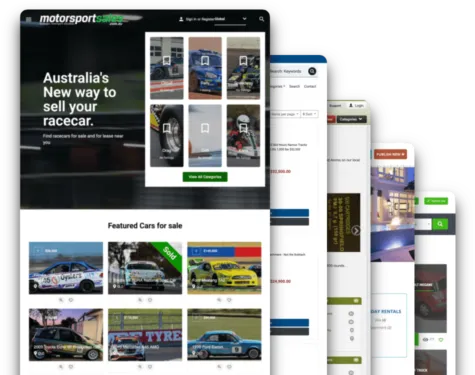Creating an inclusive and accessible online marketplace is more than a design challenge; it's a necessity in a world striving for equality.
Accessibility ensures that users with disabilities can engage with your platform effortlessly, unlocking untapped potential markets and fostering inclusivity.

This guide explores practical tips, challenges, and innovative solutions for crafting accessible marketplaces, complete with real-world examples and strategies.
The Importance of Accessibility in Marketplaces
Accessibility in design ensures that everyone, regardless of physical or cognitive ability, can use your platform effectively.
According to the World Health Organization (WHO), over 1 billion people globally have some form of disability. [source] Designing with this demographic in mind not only aligns with ethical standards but also expands your customer base.
Key Reasons to Prioritize Accessibility:
- Legal Compliance: Many countries have stringent laws, such as the Americans with Disabilities Act (ADA) or the European Accessibility Act (EAA), mandating accessible websites.
- Expanded Reach: An accessible marketplace taps into a largely underserved audience.
- Enhanced Usability: Accessibility features often improve the experience for all users, such as captions or voice navigation.
- Positive Brand Image: Inclusivity enhances your marketplace's reputation and customer loyalty.
![]()
Accessibility Tips for Marketplace Design
1. Optimize for Screen Readers
Screen readers convert text to speech or braille, aiding visually impaired users.
- Use semantic HTML tags for clear structure.
- Include descriptive alt text for images.
- Ensure ARIA (Accessible Rich Internet Applications) labels for dynamic content.
Example: eBay has optimized its platform for screen readers by using proper heading structures and providing clear image descriptions. [source]
2. Ensure Keyboard Navigation
Many users with motor disabilities rely solely on keyboards for navigation.
- Enable tab navigation across all interactive elements.
- Provide visible focus indicators.
- Avoid relying on mouse-hover effects alone.
Example: Amazon enables keyboard-friendly navigation for browsing and shopping. [source]
3. Use Color Contrast and Readable Text
Low-contrast text can be challenging for users with visual impairments.
- Maintain a contrast ratio of at least 4.5:1 for text and background.
- Avoid relying solely on color to convey information.
- Offer adjustable font sizes.
Statistics: Around 8% of men and 0.5% of women worldwide have color vision deficiency. [source]
4. Provide Captions and Transcripts for Media
Captions and transcripts are essential for users who are deaf or hard of hearing.
- Add closed captions for videos.
- Provide text alternatives for audio content.
- Ensure real-time captions for live-streamed events.
Example: YouTube auto-generates captions, making video content accessible to millions. [source]
5. Simplify Forms and Checkout Processes
Complex forms can be a significant barrier for users with cognitive impairments.
- Use clear labels and instructions.
- Group related fields logically.
- Offer error notifications with suggestions for corrections.

Challenges and Solutions in Accessibility Design
Challenge 1: Limited Resources
Solution: Use free tools like WAVE or Axe for accessibility audits.
Challenge 2: Lack of Expertise
Solution: Partner with accessibility consultants or invest in employee training programs.
Challenge 3: Keeping Up with Evolving Standards
Solution: Regularly update your marketplace based on WCAG (Web Content Accessibility Guidelines).
Case Studies: Real-World Success Stories
Case Study 1: Airbnb
Airbnb redesigned its platform to enhance accessibility, including features like screen reader compatibility and adaptive pricing information. [source]
Case Study 2: Shopify
Shopify developed accessibility guidelines for its developers, making it easier for merchants to create accessible stores. [source]
Predicting Innovations in Accessibility
- AI-Powered Personalization: AI could create adaptive interfaces tailored to individual disabilities.
- Voice Commerce Integration: Enhanced voice assistants will simplify navigation and transactions.
- Haptic Feedback: This technology can guide users with visual impairments via tactile responses.
Evolving Strategies for Inclusive Marketplaces
- Crowdsourced Feedback: Involve users with disabilities in usability testing.
- Third-Party Accessibility Tools: Integrate tools like UserWay for real-time accessibility enhancements.
- Legislative Compliance Monitoring: Stay ahead by aligning with emerging accessibility laws.
Conclusion
Designing for inclusivity transforms marketplaces into thriving hubs accessible to everyone.
By implementing accessibility features, businesses not only expand their reach but also foster a more inclusive digital ecosystem.
Looking to Create a Marketplace? Contact Us at Yclas.
Word Count: 1,526

